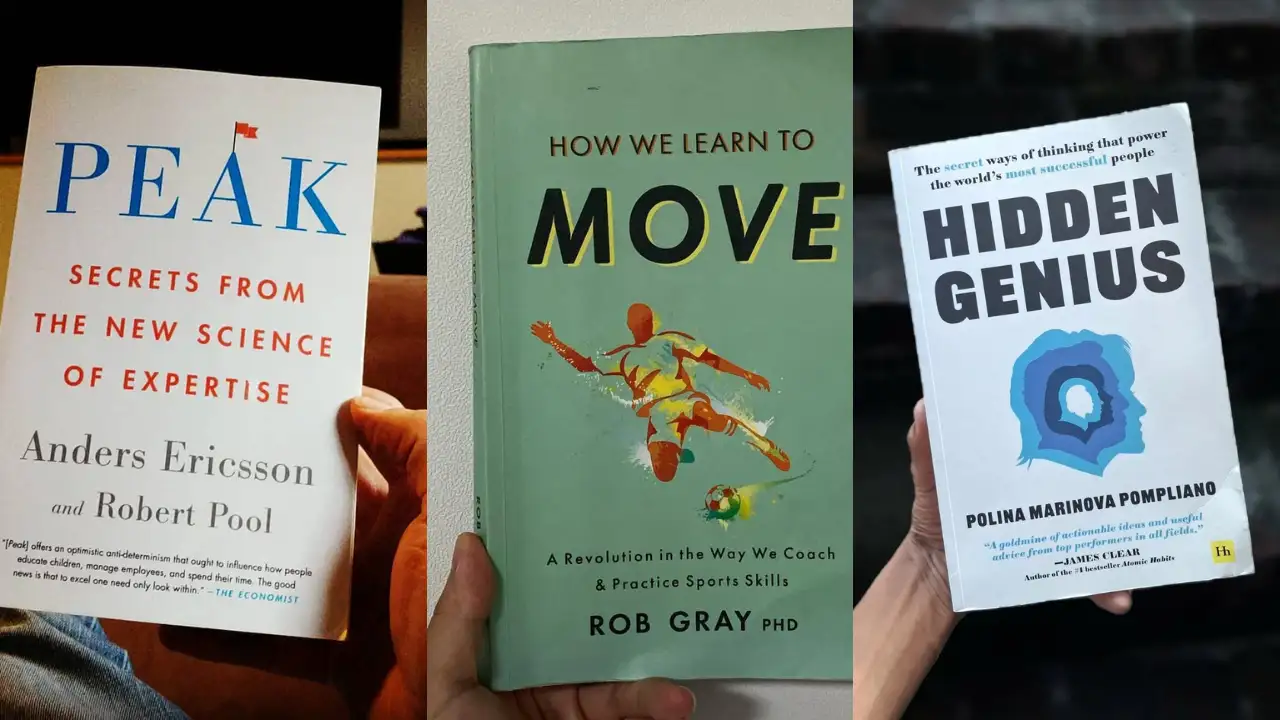By Girish Shukla
Top performers are not born with innate brilliance; they are forged by how they think, train, adapt, and push through discomfort. These books take you behind the scenes of high achievement, showing how experts from athletes to entrepreneurs cultivate mental habits that fuel their edge. By understanding how they practise, reflect, and manage failure, we begin to see that exceptional success is not mystical. It is methodical. And these four books bring us closer to decoding that mindset. Also Read: 4 Books That Are Your Shortcut to Becoming the Sharpest Person in the Room 1. Peak: Secrets from the New Science of Expertise by Anders Ericsson and Robert Pool Ericsson and Pool dismantle the widely accepted notion that natural talent is the dominant force behind elite performance. Instead, they present a robust body of research built around the principle of deliberate practice. Unlike mindless repetition, deliberate practice involves pushing beyond your comfort zone, getting immediate feedback, and correcting errors in real time. This book draws from compelling examples across disciplines, including violinists, athletes, and chess players, to show how anyone can shape their brain and body toward mastery with targeted effort. Ericsson introduces the concept of mental representations, internal constructs that top performers develop to guide their practice and decision-making. ‘Peak’ shows that expert performance comes from structured, purposeful training, not innate talent. 2. The Art of Learning by Josh Waitzkin Josh Waitzkin’s journey from chess prodigy to Tai Chi world champion makes for a compelling narrative on high performance. But this book is more than a memoir. It is a philosophical and psychological exploration of how deep learning and mastery take place. Waitzkin introduces readers to key concepts such as “investing in loss”, which involves treating setbacks as valuable learning experiences. He explains how elite performers train themselves to respond rather than react, developing emotional resilience through discomfort. Waitzkin’s ‘The Art of Learning’ promotes mastery through intuition, repetition, and presence, not chasing outcomes. Blending strategy, mindset, and adaptability, he finds growth in overlooked details. Drawing from his chess fame and martial arts journey, he shares practical tools like chunking tasks and learning through daily life. 3. Hidden Genius: The Secret Ways of Thinking That Power the World’s Most Successful People by Polina Marinova Pompliano In ‘Hidden Genius’, Polina Marinova Pompliano compiles lessons from world-class performers who have excelled across fields as diverse as technology, finance, sports, and media. Rather than prescribing one fixed path to success, the book showcases a range of mental models and strategies used by top thinkers to navigate uncertainty, make decisions, and stay focused. Each profile, from Navy SEALs to entrepreneurs, offers insight into how high achievers train their minds to remain adaptable under pressure. Pompliano focuses on principles such as intentional thinking, long-term vision, and the ability to pivot gracefully when plans fall apart. One recurring theme is the value of reframing challenges as opportunities, which helps these individuals build emotional durability. The book also stresses that high performance is not about always being “on” but about understanding when to rest and reflect. 4. How We Learn to Move: A Revolution in the Way We Coach & Practice Sports Skills by Rob Gray Rob Gray’s ‘How We Learn to Move’ challenges traditional coaching, championing the ecological dynamics approach. Rather than rigid drills, he emphasises variability and real-world context as key to building adaptable skills. Drawing on sports science and psychology, Gray shows that top athletes thrive by learning through dynamic, ever-changing environments. This idea extends to how perception and movement are interconnected; learning is not just mental, but deeply physical and interactive. Gray discusses the concept of “repetition without repetition,” a method where practice is designed to mimic the variability of real-life conditions. This helps athletes become more responsive and creative rather than mechanical. The book pushes back against outdated coaching methods that emphasise isolated technique over game-specific learning. Gray’s approach also values mistakes as part of the learning process, encouraging exploration and self-organisation. The mental edge of top performers does not come from superhuman traits but from how they approach learning, failure, and adaptation. These four books open a window into that mindset, revealing that excellence is less about secrets and more about systems. Whether you’re an athlete, student, entrepreneur, or creative, applying the principles from these works can help reshape how you practise and improve. They prove that thinking like a top performer is within reach if you’re willing to train your mind accordingly.
